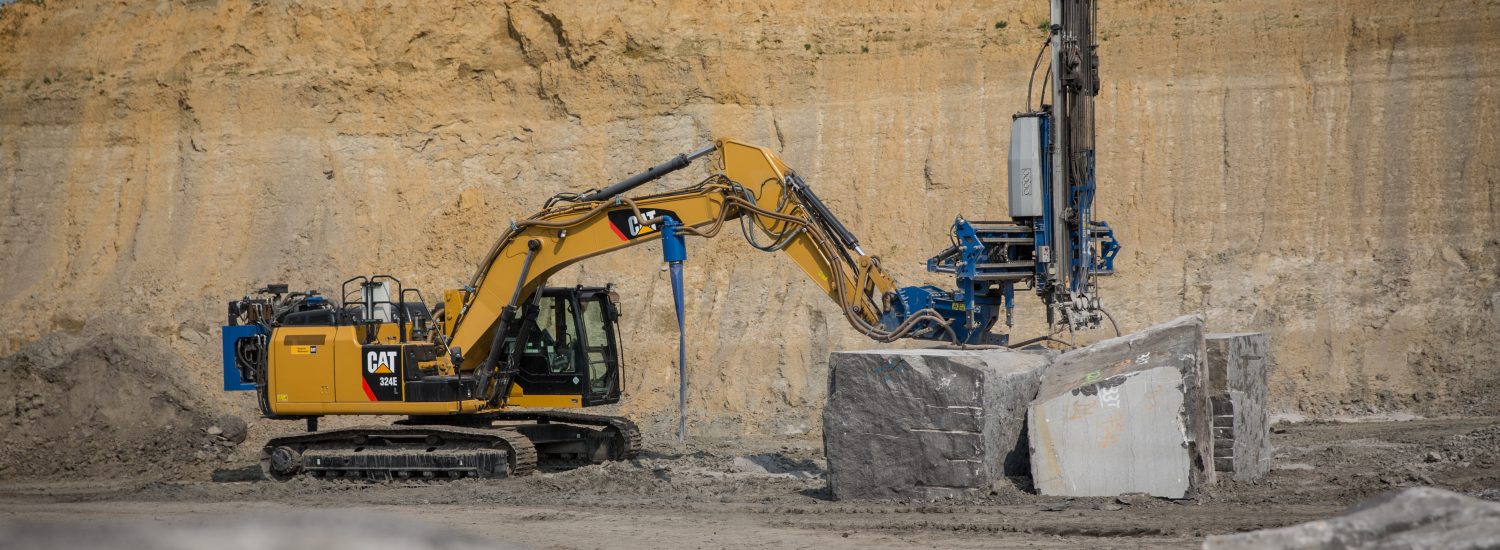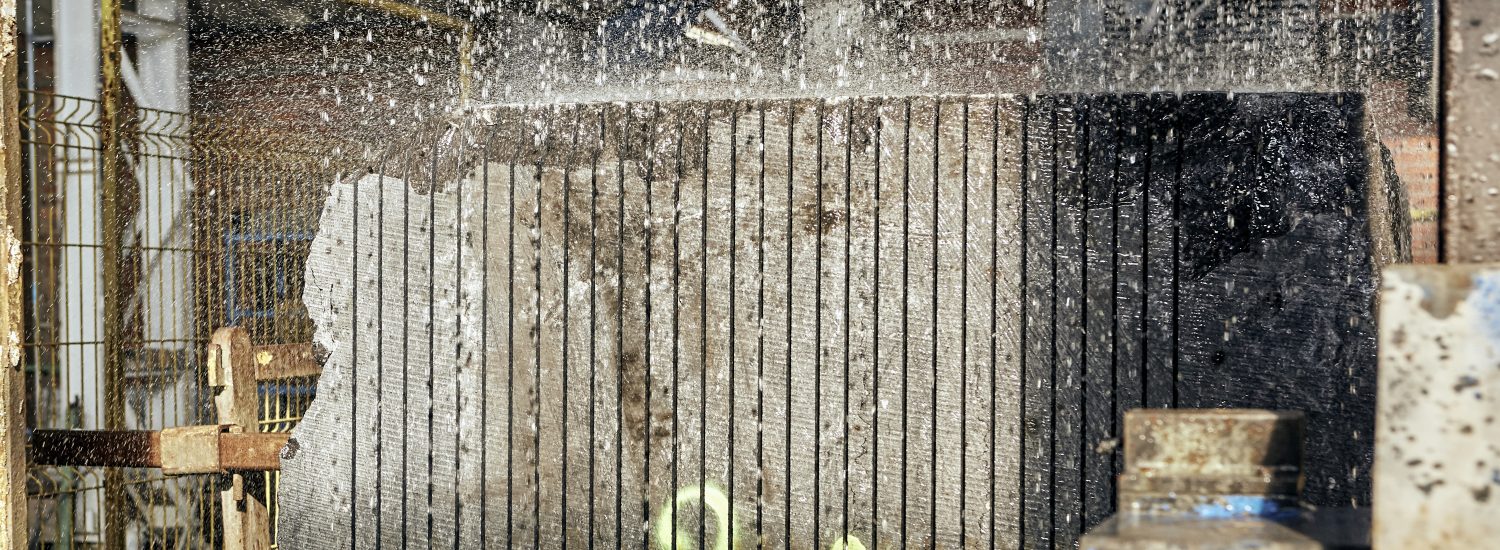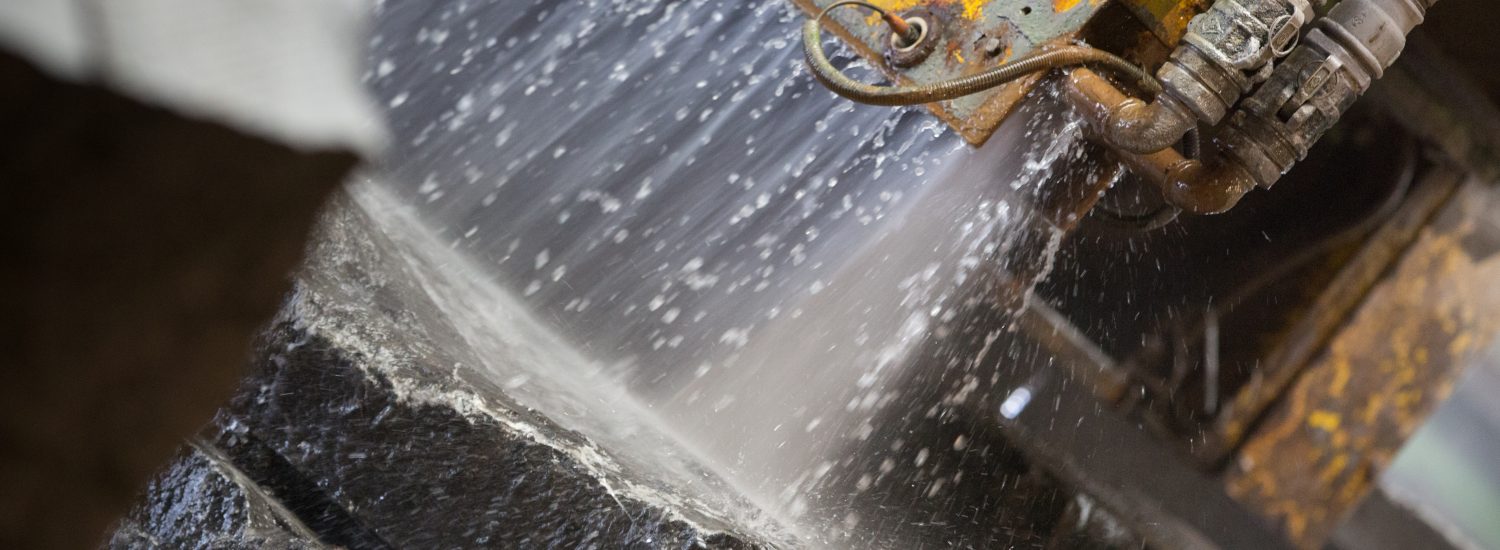Mining and processing
Centuries of know-how and tradition
The mining and processing of Belgian Blue Stone is the result of know-how acquired over the centuries and in line with technological developments.

Mining
Before reaching the Blue Stone, a layer of earth up to 25 metres in depth must be mined. It is recycled and reused for different applications (brickworks, cement works, etc.).
Once the quarry is open, we move on to the mining of the blocks of blue stone according to the structure of the deposit. A huge staircase then takes shape in the rock.
We saw the blocks vertically by means of roadheaders and diamond wire machines. The blocks are tilted using pneumatic cushions. The selected blocks are lifted up onto the site using loaders that can carry up to 45 tonnes of stone.

Squaring and sawing
Before being sawed, the blocks are squared – cut so that they have 6 flat faces – thanks to the single-blade saws and sorted according to their regularity. The squared blocks are transported by rail on flat cars to the sawing workshops.
During sawing, we turn the blocks into slabs using large discs or armouring. These semi-finished products are then measured, classified and sorted into different categories by our teams. At this point, the slabs can be sold or continue the process of transformation in our workshops.

Workshop finishing
At the marble workshop, we polish and cut the slabs on an automated chain. We first cut them into strips and then perpendicularly to obtain paving.
Our shaping machines reproduce traditional sizes and treat surfaces to obtain different finishes.
Bespoke pieces such as borders are also made mechanically.
On the other hand, the curved pieces and the decorative elements are finished by hand by our stonemasons, whose experience is indispensable to optimally work the stones into finished products.
Along the stone’s production and processing cycle the human eye is necessary in order to exclude any piece that fails to meet the stringent quality requirements.